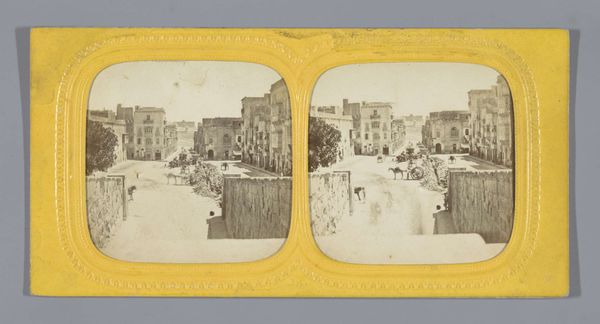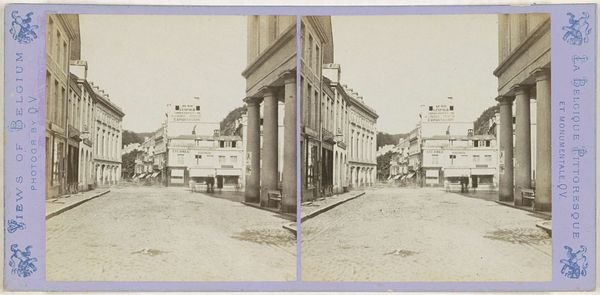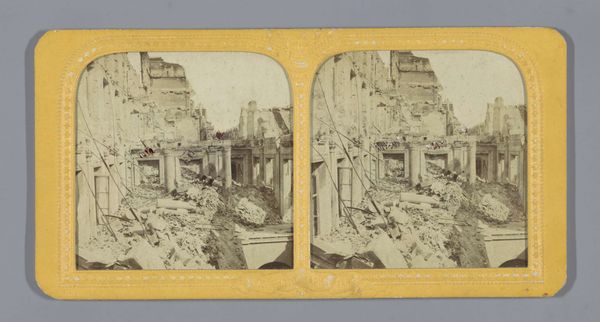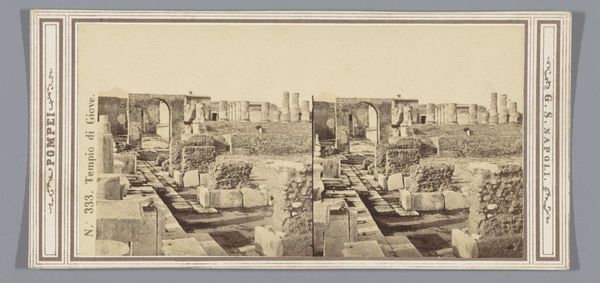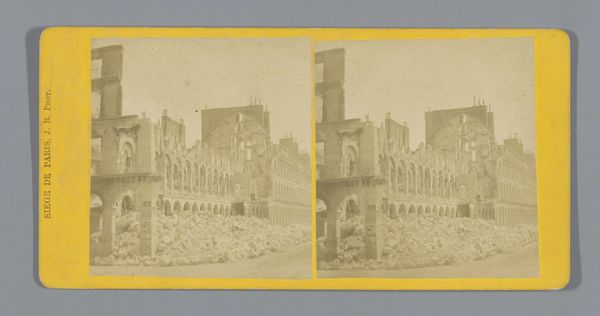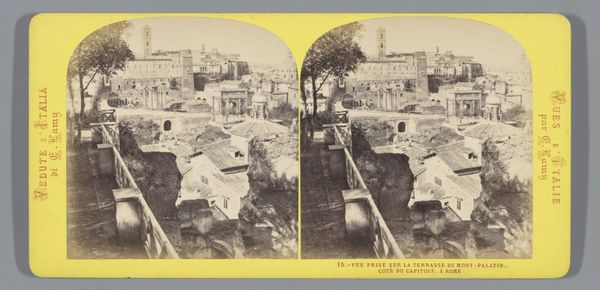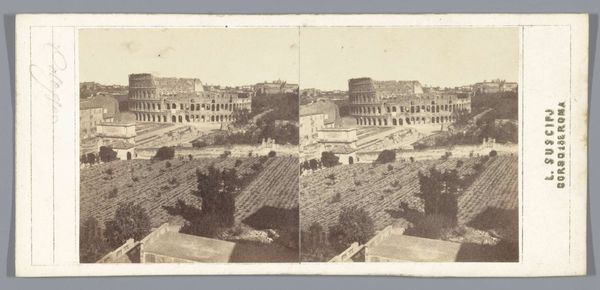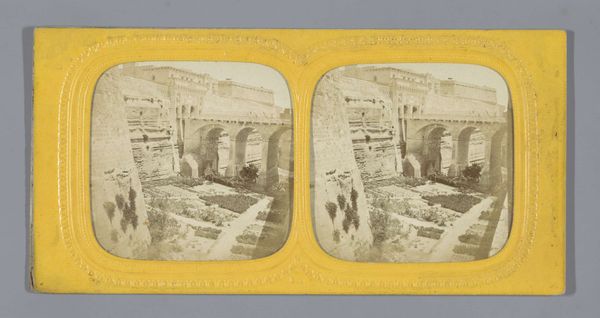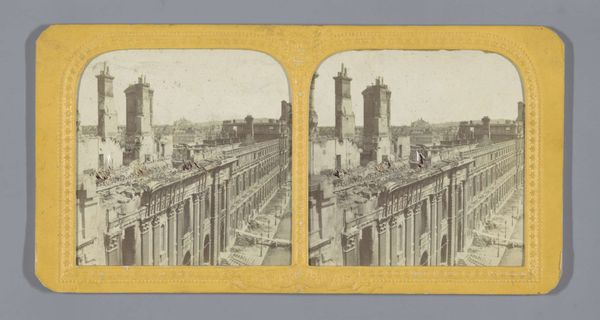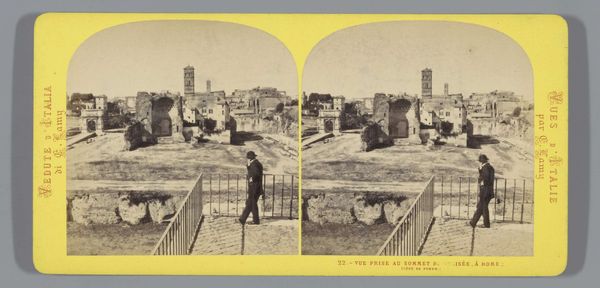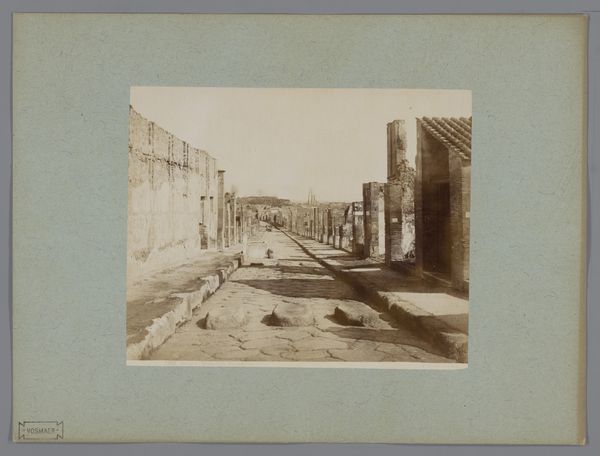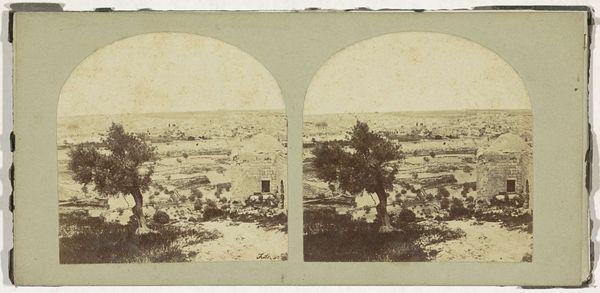
Plein met verwoeste huizen in Saint-Cloud nabij Parijs tijdens de Commune van Parijs in 1871 1871
0:00
0:00
photography, gelatin-silver-print
#
photography
#
gelatin-silver-print
#
cityscape
#
history-painting
#
watercolor
#
realism
Dimensions: height 87 mm, width 172 mm
Copyright: Rijks Museum: Open Domain
Curator: This haunting image is titled "Plein met verwoeste huizen in Saint-Cloud nabij Parijs tijdens de Commune van Parijs in 1871," created by Charles Dauvois. The medium here is a gelatin-silver print, a photographic process. What strikes you first? Editor: Immediately, the starkness. The desaturated tones emphasize the destruction, the crumbling facades, and the utter devastation. The composition draws your eye into the distance, highlighting the sheer scale of the damage and the stillness, it feels heavy. Curator: I agree, and it's crucial to examine the compositional strategies Dauvois employs to convey this weight. Note the arrangement of the buildings, how the lines of perspective converge, creating a kind of vortex of ruin. The balance between the foreground space and the receding architecture, constructing a spatial hierarchy emphasizes the hollowness. Editor: Considering it's a gelatin-silver print, I am thinking about the labor involved—the production of the plates, the camera, the printing itself, the distribution and how this medium became an essential part of documenting and, importantly, shaping public perceptions around political conflicts like the Paris Commune. There are figures captured here and there – this wasn’t easy to capture, this scene, considering the technology. Curator: Indeed. And Dauvois's realism style here allows us to witness, with unvarnished clarity, the social consequences of political upheaval. Look closely at the formal repetition of the windows, or what’s left of them – it creates an almost rhythmic pattern despite the chaos. Editor: And who are those silhouetted individuals within the frame, though? Were they residents returning to assess their homes? Laborers beginning the arduous task of clearing debris? Thinking about their material reality contextualizes the print – we imagine their physical exertion against this backdrop of man-made calamity. Curator: I think your focus on the laborers enhances how we engage with the photograph’s social function and documentary realism. Editor: It pushes me to think about how history is processed. The sheer effort required to document the devastation makes the photograph far more tangible for me, highlighting the connection between material and message. Curator: A very important consideration. Through form, this photograph offers a critical perspective on conflict and ruin, a testament to the artist's ability to capture devastation as it ripples across time. Editor: Yes, its power hinges on material effort, transforming photographic plates and chemical processes into documents echoing labor and aftermath.
Comments
No comments
Be the first to comment and join the conversation on the ultimate creative platform.
